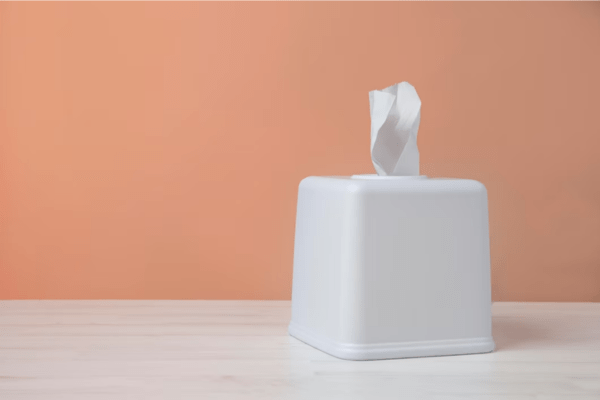When it comes to selecting a tissue dispenser, it’s essential to consider various factors to ensure convenience, hygiene, and functionality. With a wide array of options available in the market, finding the perfect tissue dispenser can be overwhelming. In this comprehensive guide, we will walk you through the key considerations and features to help you make an informed decision that suits your specific needs and preferences.
I. Types of Tissue Dispensers
Tissue dispensers come in different types, each catering to specific settings and requirements. Understanding the different types can help you choose the most suitable one for your space:
- Box Dispensers: Ideal for homes and small offices, these dispensers hold traditional tissue boxes. They are simple to use and require minimal maintenance.
- Wall-Mounted Dispensers: Commonly found in public restrooms, these dispensers are designed to save space and promote hygiene. They can be easily mounted on the wall, providing easy access and minimizing clutter.
- Countertop Dispensers: Compact and portable, these dispensers are perfect for desks, countertops, or small spaces. They offer convenience and can be moved around as needed.
- Automatic Dispensers: Touchless operation has become increasingly important in today’s hygiene-conscious world. Automatic dispensers use infrared sensors to detect hand movements and dispense tissues, ensuring a hygienic experience. They are particularly suitable for high-traffic areas such as hospitals, restaurants, and airports.
II. Capacity and Refill Options
Considering the capacity of a tissue dispenser is crucial to ensure that it can meet your usage requirements without frequent refilling. Key points to consider include:
- Determine the number of tissues a dispenser can hold, which is usually indicated by the pack size it is designed to accommodate.
- Look for easy refill options such as top-loading, side-loading, or bottom-loading mechanisms. This allows for quick and convenient replenishment of tissues, minimizing downtime and ensuring a continuous supply.
III. Dispenser Design and Material
The design and material of a tissue dispenser can play a significant role in its overall functionality and aesthetic appeal. Consider the following factors when making your selection:
- Opt for a design that complements the overall style of your space, whether it’s sleek and modern or traditional and elegant. A well-chosen design can enhance the visual appeal of the area.
- Consider the material used in the dispenser’s construction. Durable options like stainless steel or high-quality plastic are preferable for long-lasting use, especially in high-traffic environments where durability is essential.
- Look for a dispenser with a clear window or indicator that allows you to monitor the remaining tissue levels. This feature helps you avoid running out of tissues unexpectedly.
IV. Dispensing Mechanism
The dispensing mechanism of a tissue dispenser determines how the tissues are dispensed to users. Different mechanisms offer varying levels of convenience and hygiene:
Standard Pull-Through: This mechanism allows users to pull out tissues one at a time, minimizing waste and ensuring controlled usage. It is commonly found in box dispensers and some wall-mounted dispensers.
One-at-a-Time Dispensing: This mechanism is designed to dispense a single tissue at a time, reducing the risk of cross-contamination and ensuring controlled usage. It is commonly found in automatic and some wall-mounted dispensers.
Hands-Free Sensor: Automatic dispensers often utilize a hands-free sensor that uses infrared technology to detect hand movements and dispense tissues automatically. This touchless operation promotes hygiene and eliminates the need for physical contact with the dispenser.
V. Hygiene and Maintenance
Maintaining a clean and hygienic environment is crucial when it comes to tissue dispensers. Consider the following aspects to ensure optimal hygiene and ease of maintenance:
- Dust Cover or Sealed Dispenser: Look for a tissue dispenser that features a dust cover or is sealed to protect the tissues from contaminants such as dust, dirt, or moisture. This not only maintains the cleanliness of the tissues but also prolongs their shelf life.
- Antimicrobial Coating: Some tissue dispensers come with antimicrobial coatings that inhibit the growth of bacteria, mold, and mildew. This feature helps reduce the risk of spreading germs and ensures a hygienic experience for users. Additionally, it simplifies cleaning and maintenance by minimizing the accumulation of microbial residue.
- Easy-to-Clean Surfaces: Choose a dispenser with smooth surfaces that are easy to clean and maintain. Dispensers with minimal crevices and hard-to-reach areas prevent the buildup of dirt and bacteria, making them more hygienic and reducing the time and effort required for cleaning.
- Removable Parts: Consider a tissue dispenser that has removable parts, such as the dispenser cover or tray. This allows for thorough cleaning and disinfection of all components, ensuring a high level of hygiene. Removable parts also make it easier to replace worn-out or damaged components when necessary.
- Maintenance Guidelines: Read and follow the manufacturer’s maintenance guidelines to ensure the longevity and optimal performance of the tissue dispenser. Regularly check for any signs of wear or damage and address them promptly. By following the recommended maintenance practices, you can maximize the lifespan of the dispenser and maintain its hygiene standards.
- Refill Monitoring: Opt for a tissue dispenser that provides a clear indicator or window to monitor the remaining tissue levels. This feature allows you to determine when it’s time for a refill, ensuring a continuous supply of tissues and preventing any inconvenience or unhygienic situations.
- Regular Cleaning Schedule: Establish a regular cleaning schedule for the tissue dispenser based on its usage and environment. Wipe down the surfaces with a mild disinfectant regularly, ensuring that you pay attention to frequently touched areas such as buttons or levers. This routine cleaning helps maintain hygiene and ensures a pleasant user experience.
Remember, proper hygiene and maintenance of the tissue dispenser not only promote cleanliness but also contribute to the overall health and well-being of individuals using the facility. By investing in a dispenser with hygiene-friendly features and implementing regular cleaning practices, you can create a safe and hygienic environment for everyone.

